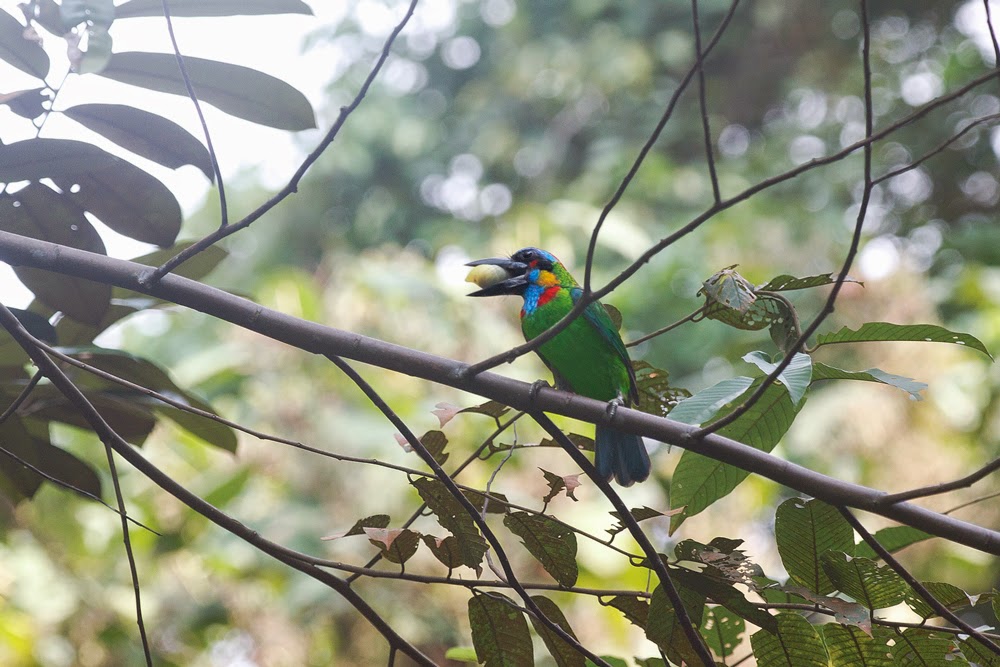Pulau Ubin: An offshore island from Singapore and our last kampung. It's Singapore before all the tall buildings went up - natural, wild and rustic. Last Sunday, we had a celebration of all things Ubin - organised by the amazing Grant Pereira and Ria Tan, Ubin Day 2014 saw a huge range of activities to bring the public closer to the heritage and biodiversity of the little island. Here's something you don't often see on your way to Ubin, a traffic jam!
This stunning giant was laying eggs on the pomelo bush and caught everyone's attention. The great mormon is polymorphic, so the female occurs in many greatly differing forms, some of which have not been seen in years. Better still, my group got to see something extremely special - a rediscovery! A strikingly patterned butterfly was flitting incessantly around a tree trunk and I knew straight away that we had something new. And it was - a rediscovery for Singapore, the Malayan Nawab (polyura moori)! It has been suspected to still be extant here and now we have the proof.
The excitement, however, didn't stop there. We were extremely honoured to have a different kind of visitor to the hill, The Prime Minister of Singapore. He - along with his troop of bodyguards, cameramen and the press - came to find out more about the hill and it's fluttering inhabitants. We took him around on a little tour and shared our knowledge of butterflies with him. What struck me was how willing he was to talk to us and hear our thoughts. Here's me sharing some of the places I love to go for butterflies.
Photo by Mr Loke PF
He was also incredibly friendly and down to earth so after having a short discussion about butterflies, we just had to take some pictures with him. Yes, by pictures, I mean we-fies. It's not everyday that you get to do this! There I am, beaming from the back. As you can see, height is something I don't have very much of...
Photo by Lemon TYK, whose in front
Prime Minister Lee Hsien Loong also announced at the opening of the event, several plans for Ubin which were mostly about preserving the rustic charm of Ubin and enhancing it. I think it is great that the government is getting involved in the conservation of natural places like Ubin. Hopefully, with events like Ubin Day, more people will understand and respect nature and maybe even get down to help in the race to conserve. I had an amazing time on Ubin Day, all thanks to Mr Khew for inviting me and of course, Mr Grant and Ria for their inexhaustible passion and energy. Here's to the wilderness!
















































